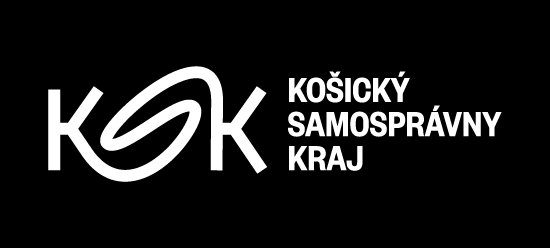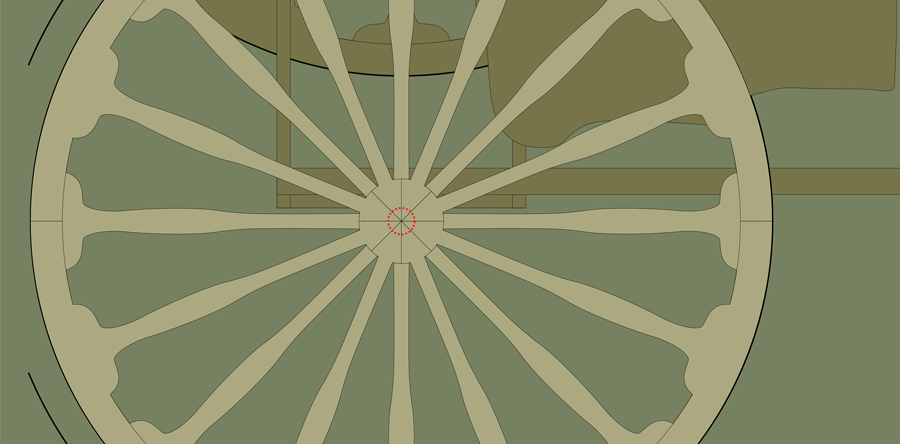opening: 30.1.2020
duration: 31.1.2020 – 22.3.2020
curator: Erik Vilím
East Slovak Gallery, Hlavná 27
Coach * indicates a four-wheeled vehicle with opposite-facing seats drawn by horses • from the German word kotsche, from the Hungarian word kocsi: ‘coming from the village of Kocs, south of Komárno’
When, in the
16th century, coaches began to travel between Vienna and Buda, the world
became a little smaller. Initially, the coach had to be designed to
cope with the rough terrain of the roads – the development of suspension
and the improvement of the upholstery were driven by the need for
adopting the sitting position over long journeys. Efforts to achieve
comfort predetermined, but also accelerated, the development of this
means of transport. The wider uptake of coaches correlated with a
growing disruption to human biology. Overcoming distances without
exerting any physical effort was accompanied by the so-called coach
sickness, similar to the experience of travelling by boat.
Paradoxically, the liberation from the tedious and mechanical process of
walking put the body in an unpleasant situation. The source of nausea
was the absurd combination of movement and physical passivity. The body
had to gradually adapt to this radical transformation, just as the coach
had to adapt to our needs. The nausea experienced by passengers was in
direct contrast to the purpose of a coach - to care for the physical
human body. The organism was enclosed in a sealed cabin and protected
from the adversities of nature. From this perspective, the coach acted
as a kind of precedent to the so-called human-oriented technology that
creates, metaphorically speaking, a shell between us and the material
world. By its form, it addresses our desires and at the same time
responds to the interface of our sensory abilities.
However, before
the birth of modernity, the coach had also played another role – the
development of transit, communication networks and infrastructure made
it possible to settle in distant places. It was one of the first
technological advances in which the locality gradually ceased to exist.
In other words, the acceleration of movement gradually transformed our
relationship with place and made it meaningless – a particular place can
always be replaced by another one with minimal effort and without any
physical work. Moreover, an equivalent and at the same time a
consequence is captured by the increase in our interest in live
streaming videos, which allow us to move from burning Australia to the
comfort of an armchair. The coach in the 20th century finally lost its
original purpose – it was replaced by an update, the train.
Coach * denotes a slang term for a private tutor taking care of a student; instructor, technical advisor, head of a sports team (since the 20th century) • from the French word coche: ‘wagon, stagecoach’
The
creation of the specific profession of coach in the 19th century
corresponded to the needs of increasing knowledge associated with the
gradual "de-enchantment" of the world [by secularisation], the spread of
enlightenment throughout Europe and the necessity of a rapid transfer
of information. The coach was a private teacher (initially working
mainly at Oxford University), a person who looked after the comfort of
the student, oversaw his or her learning process and specialization in a
particular subject. He led the student to achieve a better outcome of
his or her intellect, or more specifically, the coach accompanied the
student and directed his or her attention. Figuratively speaking, he
"transported" the concepts or ideas that were supposed to bring the
pupil to a pre-determined goal. The profession of coach was based on
nurturing the intellectual abilities. The body of the student, however,
remained in a passive sitting position in a dark office. The movement
the student performed took place in the abstract realm of cognition, in
which knowledge gradually compiled the concept of the world [an
intellectual map of social reality].
After updating the
Enlightenment version of the coach at the turn of the 20th and 21st
century, his capitalist mutation focused on the business environment.
The motto “Multiply your impact!” underpinned all the coach’s action
which were aimed at increasing productivity and profit. The privileges
and natural authority stemming from the position of a 19th century coach
have been replaced by an artificially created reputation and a detailed
profile on LinkedIn. Again, the coach was hidden in the private zone of
the manager, the director or the team leader. He focused the client's
attention on his work agenda, his or her short- and long-term goals,
fostered the courage to change, and advocated prudence. While the
Enlightenment coach focused on the student's intellect, the present
coach focused on the client's ego. The effectiveness of the coach was
fulfilled in maintaining [stabilizing] the vitality of the ego by
subliminal manipulation. His services have been set by the client’s
individual requirements [“Designed for you!”] – flexibility was key to
continued success in the changing world. In 2031, the coach of the
globalized world was replaced by technology using artificial
intelligence, which was able to analyse a wide spectrum of the client’s
digital data for its absolute personalization.
Erik Vilím
The art duo Alex Selmeci (*1994, Košice) and Tomáš Kock (*1994, Košice) aim to create spatial images or fictional environments in which the past spills into the present, the present into the future and the future into the past. They deliberately disrupt the linearity of the passage of time from the past that has already occurred to the future that is yet to take place. Technology, as one of their main themes, is not subject to moral or ethical criticism. It does not reflect specific meanings but the artists capture it in its performative transformations that leave traces on our thinking, perception and language. It is the mutual adaptation of technology to man and man to technology that circulates in their project-oriented production. Their solo project in the East Slovak Gallery represents the current position of their work.
Selmeci and Kocka studied at the Studio of Contemporary Painting at the Department of Fine Arts and Intermedia of the Faculty of Arts of the Technical University of Košice under the supervision of Adam Szentpétery. They currently continue their studies in the Studio of Intermedia Work II by Dušan Zahoranský and Pavla Sceranková at the Academy of Fine Arts in Prague. Their art projects were presented at several solo exhibitions (Caretaker Prototype 73.01 [Caretaker Institute], Panel Gallery, Prague, 2019; Place to touch the gloves and leave it there) [Caretaker institute], Temporary Parapet, Bratislava, 2019; 28 - 13 074181 , VUNU Gallery [Rooftop], Košice, 2018) and group exhibitions (Techniques of Mourning / Protocols of sacred, Jelení Gallery, Prague, 2019; New magic wand, Hotdock project space, Bratislava, 2019; Linked bodies in a container with water, GAVU, Cheb, 2019). In 2019 they took part in a residency stay at the cultural centre of Banská st a nica.
Coach * indicates a four-wheeled vehicle with opposite-facing seats drawn by horses • from the German word kotsche, from the Hungarian word kocsi: ‘coming from the village of Kocs, south of Komárno’



